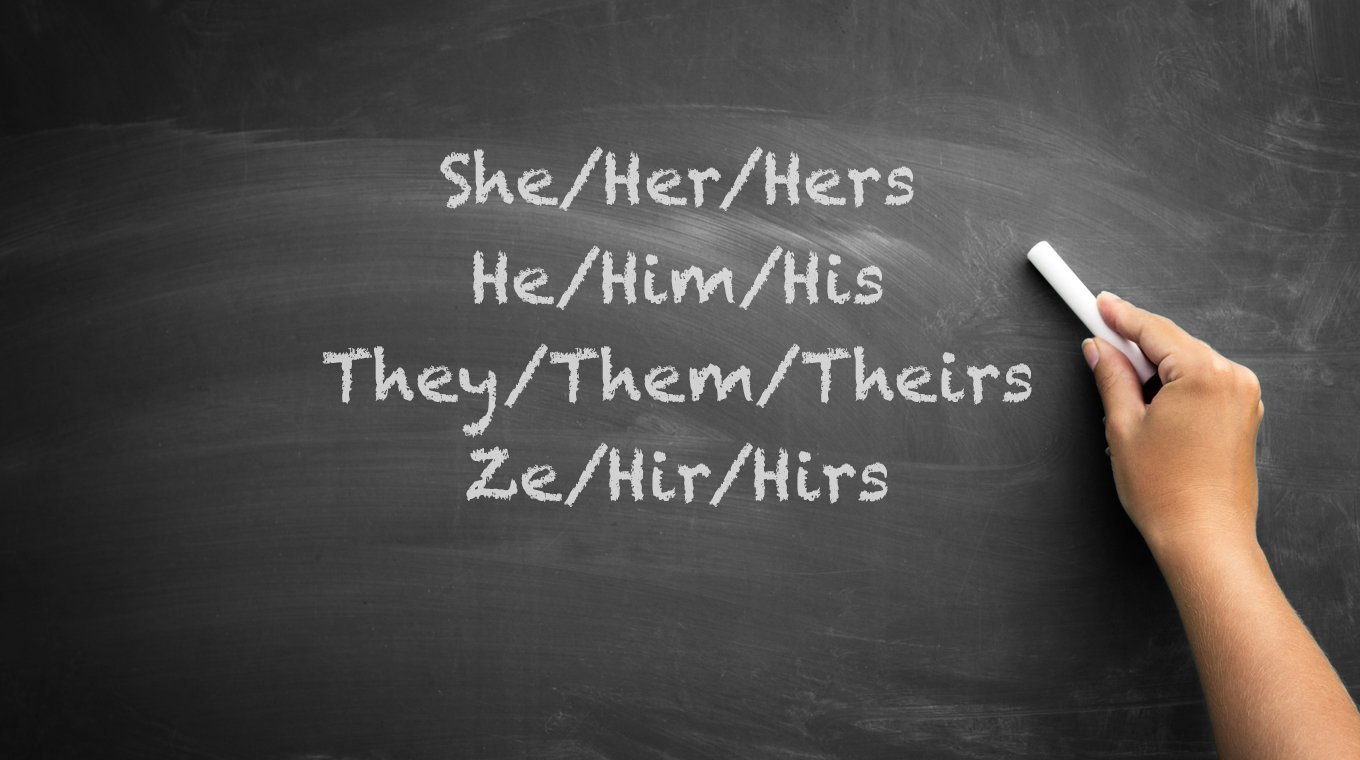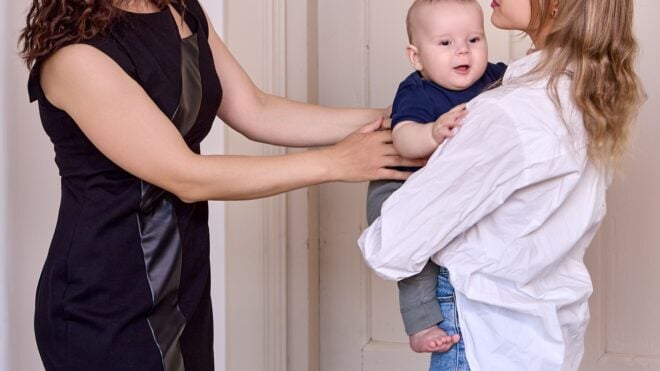
Supporting the LGBTQA+ community extends beyond flying rainbows flags and posting on Instagram for #Pride. True allyship means that you accept others for exactly who the are and how they identify in your everyday life. And a big part of showing your respect for others is by making a conscious effort to use their correct pronouns.
Whether your child is transitioning, a friend identifies as nonbinary, or you simply want to educate yourself, it’s important to understand the significance of pronouns. The truth is, all it takes is a little bit of education and a good amount of mindfulness to ensure you are using the correct pronouns when addressing someone.
What is a pronoun?

To understand how to use a pronoun correctly, you first need to know what a pronoun is. A pronoun, simply defined, is a word that is used in place of an object or, in this case, someone’s name.
For instance, you may say:
“Amy is teaching me about using correct pronouns.”
To replace Amy (the noun) with a pronoun, you would say:
“She is teaching me about using correct pronouns.”
In this instance, “she” is the female gendered pronoun because Amy identifies as female. If the individual identified as male, you would replace “she” with “he.”
“She/Her/Hers” and “He/Him/His” are the most commonly used pronouns when referring to individuals, but they do not apply to everyone.
When to use gender-neutral pronouns

A gender-neutral (or gender-inclusive) pronoun is one that is not associated with a specific gender. Those who identify as nonbinary or gender nonconformative very often choose to use gender-neutral pronouns. But anyone who feels they don’t want to go through life limited by the constraints of traditionally male or female labels can choose to use gender-neutral pronouns.
Examples of gender-neutral pronouns include:
- They/them/theirs — the most commonly used gender-neutral pronoun.
- Ze/hir/hirs — the English language does not have a designated gender-neutral pronoun. In time, the transgender and gender queer communities created “Ze/hir/hir” as an inclusive option. “Ze” is pronounced “Zee” and “hir” is pronounced “Here.”
There are also many who prefer not to use pronouns at all. In this case, you would simply use their name whenever referring to the individual.
“Language changes; it grows, expands, morphs, and adapts to meet the needs of the modern day,” Nick Adams, director of GLADD’s transgender media program, explained to Time. “That’s part of what makes it fun. The addition of gender-neutral pronouns in the English language is just another part of that evolution.”
The importance of using the correct pronouns

If you’ve been made aware that someone prefers to use different pronouns than you previously had assumed, it’s important that you self-correct and use these pronouns when addressing them moving forward. By consciously using someone’s preferred pronouns, you are saying, “I see you and I respect you.”
A mom, who wishes to remain anonymous, explained to Mom.com how painful it can be to someone (especially a child who is transitioning) for you to repeatedly use their incorrect pronouns.
“A couple weeks after [my 3-year-old son’s] coming out, my husband and I decided it was time for a name and pronoun change. Joseph was telling us every day he was a girl, and it felt like it was becoming harmful to continue to call our child by his male name and male pronouns.”
As a cis-gender woman (a woman who identifies with the gender they were assigned at birth), it wasn’t until later in life that I started to become more conscious of my use of pronouns. Growing up, it was not a conversation I had with my parents. But with age comes experience, a greater understanding of the world, and an appreciation of the complexity of the human experience. For many, gender identity is not something that can easily fit in a box of “male” or “female” and it is an indicator of my own privilege that I did not understand this sooner.
Now that I have taken the time to educate myself, I make a conscious effort to be mindful of my pronoun usage — both in person and online. Everything from my social media profiles to my email signature state my pronouns (she/her). Not because I necessarily expect people to make a mistake, but to indicate my allyship and my wish to address everyone I meet by their preferred pronouns.
Aspen Ruhlin, a client advocate and community educator at the Mabel Wadsworth Center who uses they/them pronouns, encourages people to get in the practice of introducing themselves with their pronouns. “It’s good to normalize the habit of doing that, because it communicates to people that ‘this is the respectful language to use for me,’” they said in an interview in Woman’s Day.
If you are unsure of someone’s pronouns or gender identity, try not to assume. Remember, you cannot tell how someone identifies merely by their appearance. By introducing yourself with your preferred pronouns, you create a safe space for the other person to share theirs.




